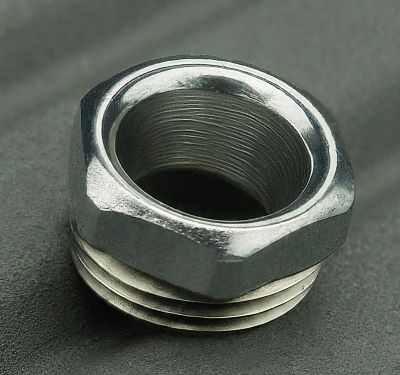Flare nuts are essential components in plumbing and HVAC systems, used to connect pipes and fittings. Understanding flare nuts is crucial for DIY enthusiasts and homeowners who want to tackle plumbing or HVAC projects.
What is a Flare Nut?
A flare nut is a type of threaded fastener that features a flared seat. This flared seat creates a seal when it’s tightened against a corresponding flare fitting. The nut, flare seat, and flare fitting work together to form a secure and leak-proof connection.
Flare nuts are commonly used in various applications, including:
➡️ Plumbing systems: Connecting copper pipes, fittings, and valves
➡️ HVAC systems: Connecting refrigerant lines and components
➡️ Automotive applications: Connecting fuel lines and brake lines
Types of Flare Nuts
There are three main types of flare nuts:
➡️ Compression flare nuts: These nuts have a built-in flare seat that compresses against the flare fitting when tightened, creating a seal.
➡️ Single-flare nuts: These nuts require a flare fitting with a single flare. They are frequently utilized in HVAC and plumbing applications.
➡️ Double-flare nuts: These nuts require a flare fitting with a double flare. They are frequently utilized in applications related to cars.
Flare Nut Installation
Installing a flare nut requires a few basic tools, including a wrench and a pipe cutter. Here are the steps involved:
1. Prepare the pipes: Cut the pipes to the desired length and clean the cut ends to remove any debris.
2. Apply sealant: Apply a thread sealant to the threads of the flare nut to prevent leaks.
3. Assemble the fitting: Screw the flare fitting onto the pipe.
4. Attach the nut: Screw the flare nut onto the flare fitting.
5. Tighten: Tighten the nut using a wrench. Be careful not to overtighten, as this can damage the flare fitting.
Tips for proper alignment and tightening:
1. Ensure that the flare fitting and nut are aligned properly before tightening.
2. To tighten the nut to the required torque, use a torque wrench.
3. Avoid using excessive force when tightening the nut.
Flare Nut Maintenance
Regular inspection is essential to ensure that flare nuts are in good condition. Check for leaks, wear, or damage. If you notice any problems, it’s important to address them promptly to prevent further issues.
To replace a damaged flare nut, follow the same steps as for installation. Be sure to use a new flare nut and sealant.
Here are the other resources to deepen your knowledge:
➡️ Essential Types of HVAC Fittings for Every System
➡️ Get a Leak-Free Seal with Copper Compression Fittings
Common Flare Nut Problems and Solutions
➡️ Leaking flare nuts: If a flare nut is leaking, it may be due to a loose connection, a damaged flare fitting, or a faulty sealant. Tighten the nut, replace the flare fitting if necessary, or reapply sealant.
➡️ Cross-threaded flare nuts: If a flare nut is cross-threaded, it will be difficult to tighten and may leak. Remove the nut and start over, ensuring that the threads are aligned properly.
➡️ Overtightened flare nuts: Overtightening a flare nut can damage the flare fitting and cause leaks. If you think a flare nut is overtightened, loosen it slightly and retighten to the correct torque.
Conclusion
Flare nuts are essential components in plumbing and HVAC systems. Understanding their basics is crucial for DIY enthusiasts and homeowners who want to tackle these projects.
By following the guidelines for installation, maintenance, and troubleshooting, you can ensure that your flare nut connections are secure and leak-free.
Post time: Aug-27-2024


